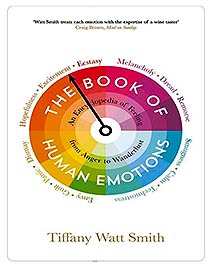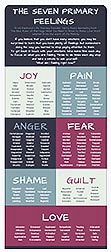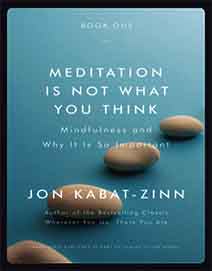Practical exercises and practices to extend our attention span, deepen our level of awareness and raise our state of consciousness
Wow! 
In my experience, Attention, Awareness and Consciousness are closely interlinked.
Increasing our competence in one of those areas, naturally increases the level in the other areas of our system.
Most of the time those amazing aspects of our life run subconsciously in the background, almost autonomous.
But in order to grow and evolve we can also do conscious steps, establish certain practices that will refine our abilities.
Paying continuous attention, concentrating and focussing on one task or thing and “bleeping out” all other stimuli needs a lot of psychic energy, mental energy.
And although concentrating on a task we like to do can be a exciting experience, we can feel that after a while we may feel “burned out”, ready for a nap ; )
I think that we have something like a reservoir in our ability to pay attention and when it is running low, we need to recharge “it”.
Here are a few things that I found helpful to do that and it is probably a good idea to consciously establish those practices as part of our lifestyle:
– Getting enough good sleep
It sounds so obvious and common sense, but do we have a “conscious sleep culture” in order so that our body/mind is in top form at the beginning of every new day.
So that we have loads of psychic energy to pay 100%-ish attention to everything we are doing ; )
Recommended reading:
The Power of Sleep – Sleep Better Feel Better Living Better.pdf << Download here.
– Avoiding multitasking
I recommend to avoid such things as “smoking while talking”, “driving while conversing on the phone”, ” washing the dishes while watching TV” and so on …
Doing one thing at a time and being 100% present with it is good for all things involved (also the dishes ; ). And our energy reservoir will be less depleted.
– Avoiding media consumption, especially doom-scrolling on Social Media timelines
I guess many people will not want to like what i say here, but nothing depletes our mental energy as much as the loads of incoherent and bite sized information and impulses that come in the form of text-bleeps, hundreds of pictures and videos that scroll in front of our eyes on the timelines of Facebook, Twitter and co. And the News Media that we are habitually scanning.
Subconsciously our brain/mind tries to process all of that. And very often it is rather negative shards of info that we allow to fill our mind.
So …. You can hate me, but please delete your Facebook and Twittttter and YouTube NOW! ; )
– Relaxed and contemplative walks in nature
Really, nothing more regenerative than to look at the trees and flowers and listen to the birds and the rain.
I am a big fan ; )
– Finishing “Unfinished Business”
Everything that is waiting on our To Do list, especially whatever it is we are avoiding to do is weighting on our subconscious mind and using up psychic energy.
The more we can clean up our “Inner Space”, the more we will be able to be fully present and attentive to whatever is in front of us or inside of us that needs our Attention.
– Practicing mindful-ness, careful-ness and presence in any and every situation
The presence of mind – mindfulness – the presence of our whole self is actually the doorway to a full experience of life.
Usually this word – mindfulness – is closely associated with sitting meditation – Vipassana – but it actually is an attitude that we can cultivate and practice in any situation and circumstance.
Recommended reading:
Falling Awake – How to Practice Mindfulness in Everyday Life.pdf << Download here
– Practicing and developing Focus and Concentration – the gentle way
Conscious focus and concentration does not need to involve a strenuous effort. We can cultivate a kind of gentle approach, a soft focus that still is fully aware and precise in perception.
For example we can try this:
– Take a simple but visually rich object, preferably something from nature
– Put the object on a white piece of background, paper or such
– Take one conscious deep and relaxed breath or two.
– Let your gaze rest gently on the object without focussing on something in particular.
– Allow your gaze to wander and touch on various aspects of the object without commenting or analyzing it. Like you would lovingly look at a beloved child or person.
– Take the object “in” as a whole.
– Stay alert and awake.
– Hold this gentle focus for as long as you are comfortable with it. .
– Don’t anticipate any specific outcome of the exercise. Let the practice be pure.
– Each time you do it, intend to extend the length of the exercise.
– Learning to meditate – seriously ; )
There are many ways to do that: A Vipassana Course in India, a Silent Retreat in Thailand, a Forrest Monastery in Burma.
Or – more simple – one of the many meditation courses available in Seminar Houses or Buddhist Centers next door to where we live.
Or downloading one of the better Meditation Apps onto the iPhone >> iMeditate ; )
Here some to try out:
The Mindfulness App
Simple Habit
Headspace
Obviously it is a bonus if you can learn to meditate with an experienced teacher in person.
I am not a big fan of the multitude of guided meditation CDs and programs where you sit and listen to a person speaking to you and guiding your thought-stream.
Maybe it can be enjoyable and beneficial but i think there is a danger that it ends up just as another kind of entertainment for the mind.
I am always recommending to start with learning Vipassana Meditation, which was the original method that Buddha was teaching (supposedly ; ).
For me it perfectly combines the essential elements of Conscious Focus (samata in Sanskrit) and Insight (vipassana), which is Attention and Awareness.
If you have specific questions about that, feel free to contact me at >>. [email protected]
You may want to read this blog entry >> “How to meditate – a bit more serious this time”
And here is a really good book about Meditation – the bigger context:
Meditation Is Not What You Think – Mindfulness and Why It Is So Important.pdf << Download here
– Practicing Peripheral Awareness
This is the antidote to “Tunnel Vision”, which is the “dark side” of concentration and focus.
When we practice Peripheral Awareness we have and keep our focus – soft focus – on the object of our choice but at the same time we expand our awareness so include the whole of out field of vision.
It goes like that:
– Place an object in front of you at some distance. It may be a stone, or a candle or whatever.
– Breath relaxed and deep and put a gentle but unwavering focus on the object – Soft Focus.
– Keep the focus while extending your arms toward the object, thumbs upwards. You can still see the object between your arms/hands .
– Keep the soft focus on the object – relaxed eyes ; ) – while you slowly move both arms to opposite sides.
– Keep the focus on the object – soft eyes – while in your peripheral vision “you are aware” of your hands/thumbs more than you actually see them clearly.
– Move as far to the sides with your arms as you can keep this peripheral awareness of your hands/thumbs.
– Slowly return the arms to the center and lower them onto your lap
The result comes with practice and practice will establish a soft focus, a perfect peripheral vision, later on morphing into a whole-around awareness.
– Practicing SelfAwareness with the help of Journaling
It is a great practice to develop a greater insight into our “Inner Life, Inner Space” to get into the habit of journal writing, preferable in the evening before bedtime.
And it shall be a “Inner Life Journal” that is concerned with all those things that actually run our life – more or less subconsciously:
Feelings, thoughts, desires, fears, believes, instinctive impulses, hopes, dreams aso.
It shall not be about what has happened, no actions or events.
It shall not be a commentary or analysis.
It shall not make conclusions.
There shall not be a judgement or evaluation.
The writing shall simply reflect those inner experiences, logical or not, chaotic or irrational or not.
In this way we may be able to develop “The Witness Consciousness”
.
– Practicing Discernment of Inner Experiences
Especially when we are practicing the Inner Life Journaling, we may wish to develop a more extended vocabulary to describe the inner activities of our psyche.
A more nuanced language and specific terminology is something that would come handy but we commonly have not really learned that in school or life.
To expand on this ability is very helpful in noticing and identifying feelings, emotions, motivations, fears, hopes and all the rest of impulses that make up our inner life.
Here are 2 great resources:

The Book of Human Emotions – An Encyclopedia.pdf << Download here

The 7 Primary Feelings.pdf << Download here
To have such extended and refined vocabulary is also very helpful in communication, when we try to share with people what is actually going on inside us.
– Practicing Attention, Self-Awareness and Awareness in conversation with people
When talking with folks and friends, family members or kids, we are often quite unconscious whats going on inside us and whats going on in the other person opposite us.
More often than not we may be carried away by what we want to say – especially when it is an emotional issue at hand, or when we have an agenda we want to get across – so we are not really “with the person”, not really present with the situation.
Often the whole thing is going on pretty automatic and only later on we reflect on the stupid things we have spilled out ; )
“Why did i have to say that in such a way???”
To learn “The Art of Sharing”, to practice “Presence” in a conversation and to really “hear, feel and see” the other, is the greatest gift we can give to our loved ones. And to anybody else we encounter, actually.
I don’t want to get into the methodical side of this “art”right now, just want to hint to it.
Maybe i’ll write a post about it another time.
For now i just say:
DO IT
Let go of your habits of “just talking” or “not saying much, actually” or “not really listening to understand what the other means” or “just wanting to get your opinion out” or “not asking clarifying questions” or “not being really interested” or “thinking about something else all the time while pretending to listen”
BEING PRESENT
This is the greatest gift we can give to the other and to our Self as well.
LOVE WILL SPRING FROM IT




 click to enlarge
click to enlarge